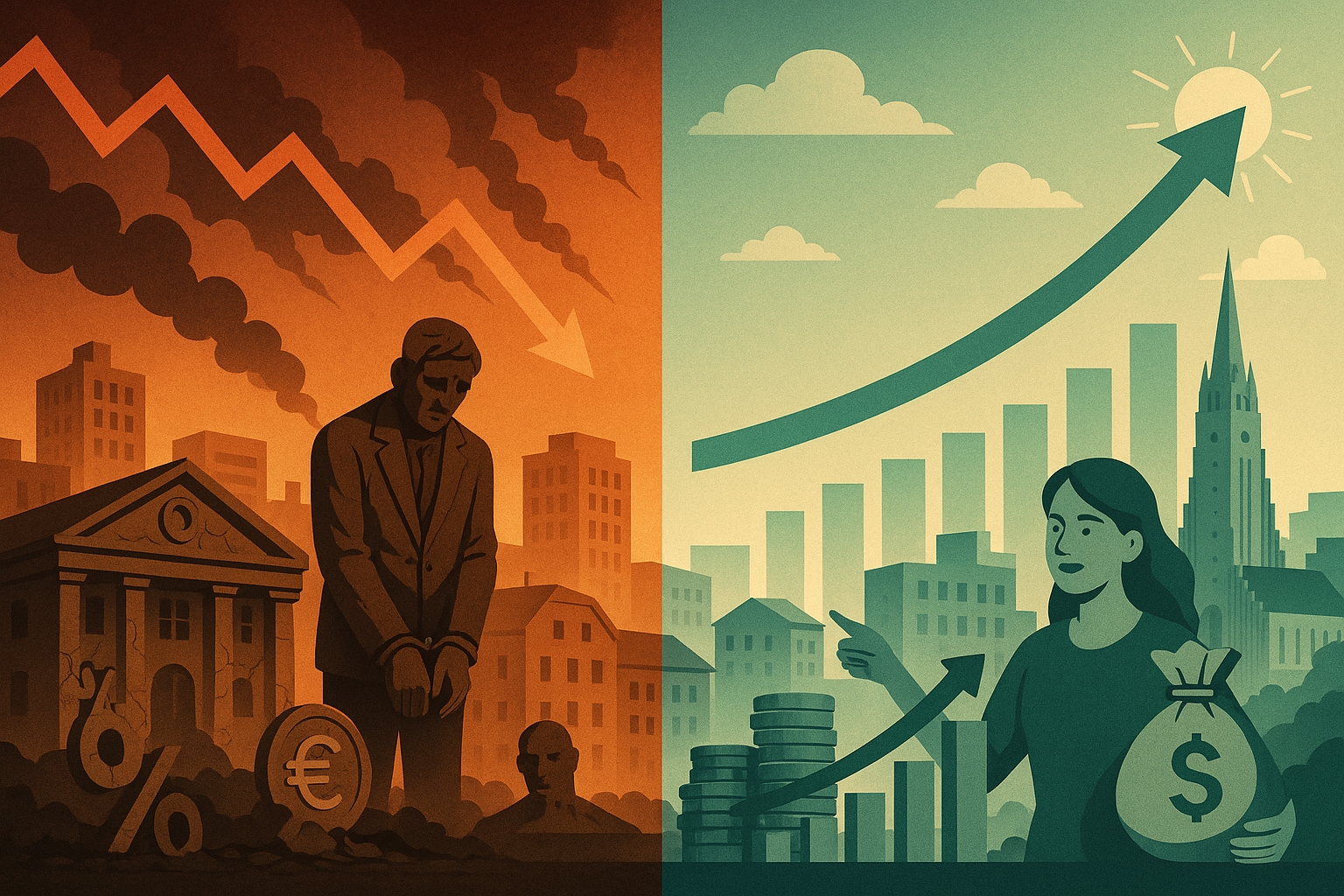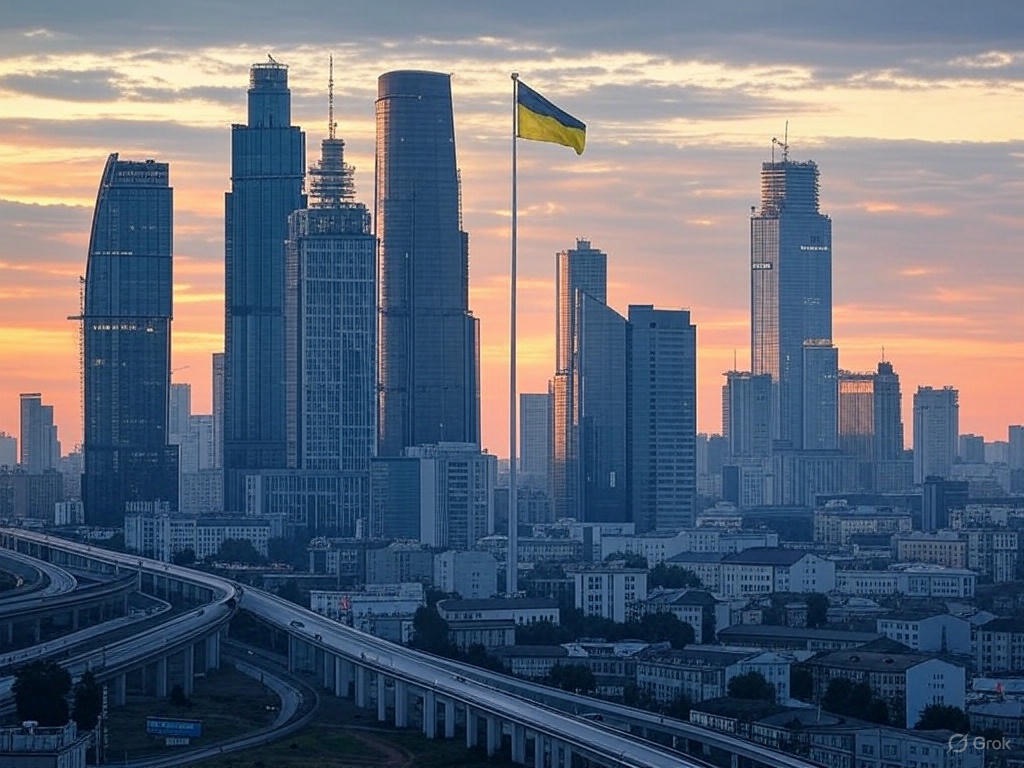Reykjavik, Iceland – Ten times the size of its entire economy. That was the staggering scale of Iceland’s banking sector before it vanished, almost overnight, in the autumn of 2008. For a nation of just 320,000 people, perched on a volcanic rock in the North Atlantic, the global financial crisis wasn’t just a storm; it was an economic cataclysm. The Icelandic króna went into freefall, the stock market evaporated, and the nation teetered on the brink of “national bankruptcy.” Yet, from this inferno, Iceland charted an audacious, unconventional path – letting its behemoth banks fail, shielding its citizens while challenging foreign creditors, and even jailing the architects of its downfall. This is the story of how a tiny island defied economic orthodoxy and, with a blend of stubborn resilience and a surprising volcanic intervention, forged a remarkable recovery that offers potent lessons for a volatile world.
The Viking Mirage: A Boom Built on Borrowed Billions
The early 2000s were Iceland’s gilded age. Financial liberalization and privatization in the late 1990s, coupled with entry into the European Economic Area, flung open the doors to global capital. Iceland’s three major banks – Kaupthing, Glitnir, and Landsbanki – transformed from staid domestic lenders into aggressive international players. Dubbed the new “Icelandic Vikings,” a cadre of entrepreneurs and financiers went on a global shopping spree, snapping up assets from London retail chains to European football clubs, all fueled by eye-popping levels of debt.
The engine of this expansion was cheap foreign money. With global liquidity abundant, Icelandic banks borrowed voraciously, issuing tens of billions of euros in bonds. They lured foreign investors with “glacier bonds” – króna-denominated instruments offering juicy returns thanks to Iceland’s sky-high domestic interest rates, themselves a desperate measure by the Central Bank to cool an overheating economy. This created a classic carry trade: borrow cheaply elsewhere, invest in high-yield Icelandic assets. The króna soared, seemingly a one-way bet.
Adding fuel to the fire, Icelandic banks launched high-interest online savings accounts abroad, like Landsbanki’s infamous “Icesave,” sucking in billions in retail deposits from the UK and Netherlands. By 2007, the combined assets of the three main banks had ballooned to roughly ten times Iceland’s GDP. External debt reached six times the national output. It was, as some economists termed it, a “hedge fund economy” – magnificent on paper, but precariously leveraged. GDP per capita was among the world’s highest; Iceland topped the UN Human Development Index.
But the sheen was deceptive. Inflation was rampant, the current account deficit yawned at over 15% of GDP, and warning signs from analysts about an impending hard landing were largely dismissed. Financial supervision was lax, outpaced by the blistering growth. A culture of crony capitalism, with banks lending liberally to affiliated owners, went unchecked. Iceland was, as one commentator aptly put it, “a child on their first visit to a candy store,” gorging on excess. The sugar crash was inevitable.
The Great Freeze: When the Volcano Cracked
The global credit crunch, ignited by the U.S. subprime crisis in 2007, began to tighten the screws. By spring 2008, the króna was sliding. The collapse of Lehman Brothers in September 2008 was the final death knell. Iceland’s overstretched banks, unable to refinance their colossal foreign debts, imploded with breathtaking speed.
Within a single, chaotic week in October 2008, Glitnir, Landsbanki, and Kaupthing all failed. An astonishing 97% of the Icelandic banking system collapsed. The króna ceased trading internationally after plummeting over 70% against the euro. The stock market lost 90% of its value. The government, facing an impossible choice, passed emergency legislation. Its audacious plan: split the failed banks. “New” domestic banks were carved out to protect Icelandic deposits and loans, keeping the internal payment system alive. The vast foreign assets and liabilities were quarantined in “old” bank estates, left to wind down. Essentially, Iceland ring-fenced its domestic economy and told foreign creditors they would have to take substantial losses – a de facto default by the private banking sector.
The economic shock was immediate and brutal. GDP contracted by 6.5% in 2009 and another 4% in 2010. Unemployment, virtually unknown before the crisis, surged to nearly 10%. Inflation soared, decimating savings and making foreign currency loans (popular during the boom) unbearable for thousands of households. The nation, stunned and angry, turned to the International Monetary Fund (IMF), securing a $2.1 billion loan package, supplemented by aid from Nordic neighbours. It was the first developed nation in over three decades to seek an IMF bailout.
A Nation’s Defiance: The Unorthodox Playbook
Iceland’s response, however, was anything but standard IMF fare. Crucially, it involved:
- Capital Controls: Imposed in November 2008, these strict controls halted capital flight, stabilizing the króna. Though controversial and anathema to free-market purists, they acted as a vital tourniquet, preventing a complete currency meltdown and allowing domestic interest rates to remain lower than they otherwise would have. These controls would remain, in various forms, for over eight years.
- Creditor “Bail-In”: Instead of taxpayers footing the bill for foreign bank debts, Iceland ensured foreign bondholders and wholesale creditors of the “old banks” absorbed massive losses. This “bail-in” approach was radical at the time but saved Iceland from sovereign bankruptcy.
- The Icesave Standoff: When the UK and Dutch governments compensated their citizens for losses in Icesave accounts, they demanded reimbursement from Iceland. Twice, Icelandic voters rejected repayment deals in national referenda. The dispute went to an EFTA court, which, in a landmark 2013 ruling, vindicated Iceland, stating it wasn’t obliged to use taxpayer funds for guarantees beyond the failed bank’s assets.
- Protecting the Populace: While austerity was necessary, it was phased in. The government prioritized safeguarding the social welfare system, healthcare, and education, and implemented household debt relief schemes. Remarkably, inequality in Iceland actually fell during the crisis years.
- The “Pots and Pans Revolution”: Public fury over the collapse, widely blamed on banker greed and regulatory negligence, manifested in mass protests. Citizens banging kitchenware outside parliament forced the resignation of the government in January 2009, ushering in a new left-leaning coalition.
- Accountability – Bankers Behind Bars: Iceland pursued legal justice with a vigour unseen elsewhere. A Special Investigation Commission exposed extensive malfeasance. A special prosecutor brought charges, leading to the conviction and imprisonment of around 26 high-ranking bankers and financiers, including the CEOs of all three major failed banks. Even former Prime Minister Geir Haarde faced trial for negligence, though he was largely cleared. This commitment to holding power to account was a stark contrast to the impunity often seen in larger economies.
By 2011, against many predictions, Iceland’s economy was growing again. Unemployment began a steady decline. The IMF program concluded successfully.
The Volcanic Phoenix: Tourism Lifts Off
Then came an unexpected catalyst. In April 2010, the Eyjafjallajökull volcano erupted, spewing a colossal ash cloud that paralyzed European air travel. Initially feared as another blow, the eruption became an unintentional global marketing campaign. Images of Iceland’s dramatic landscapes filled news screens worldwide.
This newfound visibility, combined with a dramatically devalued króna that made Iceland an affordable destination, ignited an unprecedented tourism boom. International visitor arrivals skyrocketed from around 500,000 in 2010 to 2.3 million by 2018. Tourism swiftly became Iceland’s largest export earner, overtaking fisheries and aluminum, and at its peak contributing over 40% of export revenues and around 8-10% of GDP. This influx of foreign currency was pivotal, creating tens of thousands of jobs, driving GDP growth (over 7% in 2016 alone), and allowing Iceland to build current account surpluses and pay down debt.
Contrasting Fates: Why Iceland Succeeded Where Others Stumbled
Iceland’s journey stands in sharp relief when compared to other crisis-hit nations. Ireland, another small island with an oversized banking sector, chose to guarantee all bank liabilities. This decision saved the banks but crippled public finances, leading to severe austerity and a slower, more painful recovery for its citizens, saddled with the private sector’s debt. Greece, caught in a sovereign debt crisis and shackled by its Eurozone membership, could not devalue its currency. It endured years of harsh austerity, a catastrophic 25% GDP contraction, and soaring unemployment, with recovery proving agonizingly slow.
Iceland’s crucial advantages were its own currency, allowing for devaluation to regain competitiveness, and the fact that its crisis was primarily a private banking debt issue, not sovereign. It could, therefore, impose capital controls and choose to bail-in foreign creditors without the immediate systemic constraints faced by Eurozone members.
The New Iceland: Forged in Crisis, Looking Ahead
A decade and a half after the meltdown, Iceland’s economy is transformed. The behemoth financial sector is a shadow of its former self, replaced by a more balanced economy reliant on tourism, fisheries, renewable energy, and a burgeoning tech scene. The reformed banking system is smaller, domestically focused, and far more stringently regulated. Public debt, which peaked at over 90% of GDP, fell to around 35% before the COVID-19 pandemic. Unemployment is low, and the nation consistently ranks high in global quality-of-life indices. Iceland transitioned from a net debtor to a net external creditor.
The lessons of 2008 are seared into the national psyche. Financial oversight is stronger, and there’s a greater appreciation for sustainable development. Yet, challenges remain. Over-reliance on tourism exposed vulnerabilities during the pandemic, highlighting the need for continued diversification. Managing the environmental impact of mass tourism and preventing new asset bubbles are ongoing concerns.
Iceland’s saga is a powerful testament to resilience. It broke the established rules of crisis management and not only survived but arguably thrived, crafting a recovery that was faster and more equitable than many orthodox approaches. While its unique circumstances make its playbook difficult to replicate wholesale, Iceland’s defiance, its commitment to its citizens, and its ability to seize unexpected opportunities offer enduring insights. From the fire of financial collapse and the ice of its Arctic environment, Iceland emerged, not unscathed, but undeniably stronger, wiser, and with a compelling story for the ages.
Disclaimer: Important Legal and Regulatory Information
This report is for informational purposes only and should not be construed as financial, investment, legal, tax, or professional advice. The views expressed are purely analytical in nature and do not constitute financial guidance, investment recommendations, or a solicitation to buy, sell, or hold any financial instrument, including but not limited to commodities, securities, derivatives, or cryptocurrencies. No part of this publication should be relied upon for financial or investment decisions, and readers should consult a qualified financial advisor or regulated professional before making any decisions. Bretalon LTD is not authorized or regulated by the UK Financial Conduct Authority (FCA) or any other regulatory body and does not conduct activities requiring authorization under the Financial Services and Markets Act 2000 (FSMA), the FCA Handbook, or any equivalent legislation. We do not provide financial intermediation, investment services or portfolio management services. Any references to market conditions, asset performance, or financial trends are purely informational and nothing in this report should be interpreted as an offer, inducement, invitation, or recommendation to engage in any investment activity or transaction. Bretalon LTD and its affiliates accept no liability for any direct, indirect, incidental, consequential, or punitive damages arising from the use of, reliance on, or inability to use this report. No fiduciary duty, client-advisor relationship, or obligation is formed by accessing this publication, and the information herein is subject to change at any time without notice. External links and references included are for informational purposes only, and Bretalon LTD is not responsible for the content, accuracy, or availability of third-party sources. This report is the intellectual property of Bretalon LTD, and unauthorized reproduction, distribution, modification, resale, or commercial use is strictly prohibited. Limited personal, non-commercial use is permitted, but any unauthorized modifications or attributions are expressly forbidden. By accessing this report, you acknowledge and agree to these terms-if you do not accept them, you should disregard this publication in its entirety.



